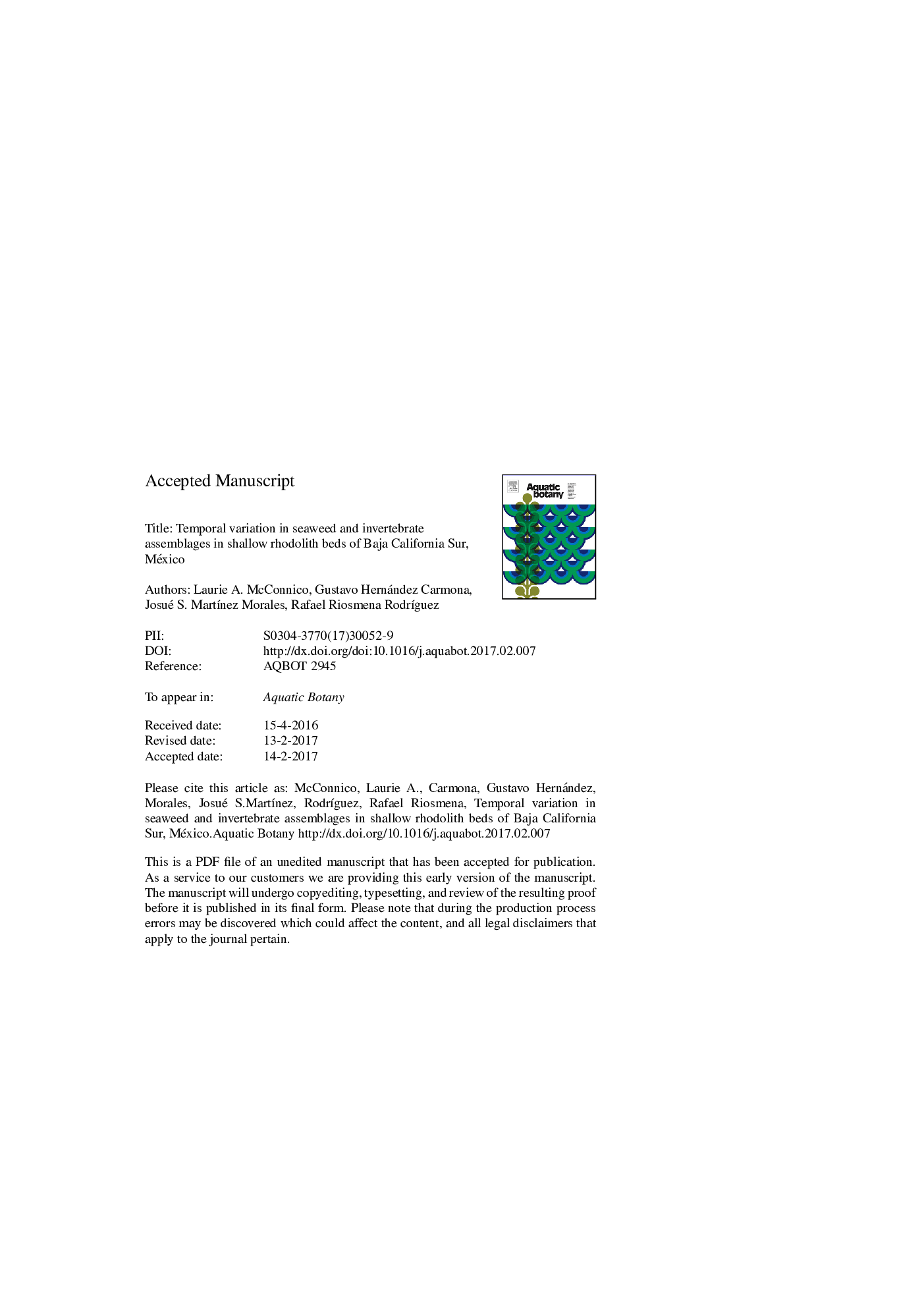| Article ID | Journal | Published Year | Pages | File Type |
|---|---|---|---|---|
| 5764074 | Aquatic Botany | 2017 | 40 Pages |
Abstract
We assessed temporal variation (2013-2015) in rhodolith (non-geniculate corallines) size and cover, as well as variability in associated macroalgae and invertebrates in one rhodolith bed from the Gulf of California and two on the Pacific Coast of Baja California Sur, México. While rhodoliths persisted at all sites, those in the Gulf were less abundant (Lithothamnion muelleri: 10-14% cover) compared to Pacific sites (Lithophyllum margaritae: 40-64% cover). Rhodoliths from Pacific sites were influenced by storms and tidal currents that shifted beds and redistributed fine sediments. At the Gulf site, 30 macroalgal taxa were encountered and abundance peaked during spring (76-78% cover) and early summer (73-97% cover), then declined following extreme summer heat (22-25% cover) suggesting algae cycle in response to seasonal temperature changes. At Pacific sites, 14 macroalgal taxa were encountered with highest covers observed in winter 2014 (44%) and spring 2015 (26%). Seasonality was potentially masked by algal blooms or inter-annual temperature variation. Sessile invertebrate cover was low at the Gulf site (typically <7%) and ranged from 3 to 21% at Pacific sites, while mobile invertebrates were dominated by arthropods (Gulf: 1-3 ind mâ2, Pacific: 1-91 ind mâ2) and molluscs (Gulf: 0-2 ind mâ2, Pacific: 9-470 ind mâ2). Invertebrate assemblages did not vary seasonally at any site and were likely impacted by episodic recruitment as well as other biotic and abiotic factors. Detailed life history studies and more complete environmental data are needed to better connect relationships between biological patterns observed in rhodolith beds worldwide and associated environmental factors.
Related Topics
Life Sciences
Agricultural and Biological Sciences
Aquatic Science
Authors
Laurie A. McConnico, Gustavo Hernández Carmona, Josué S. MartÃnez Morales, Rafael Riosmena RodrÃguez,
